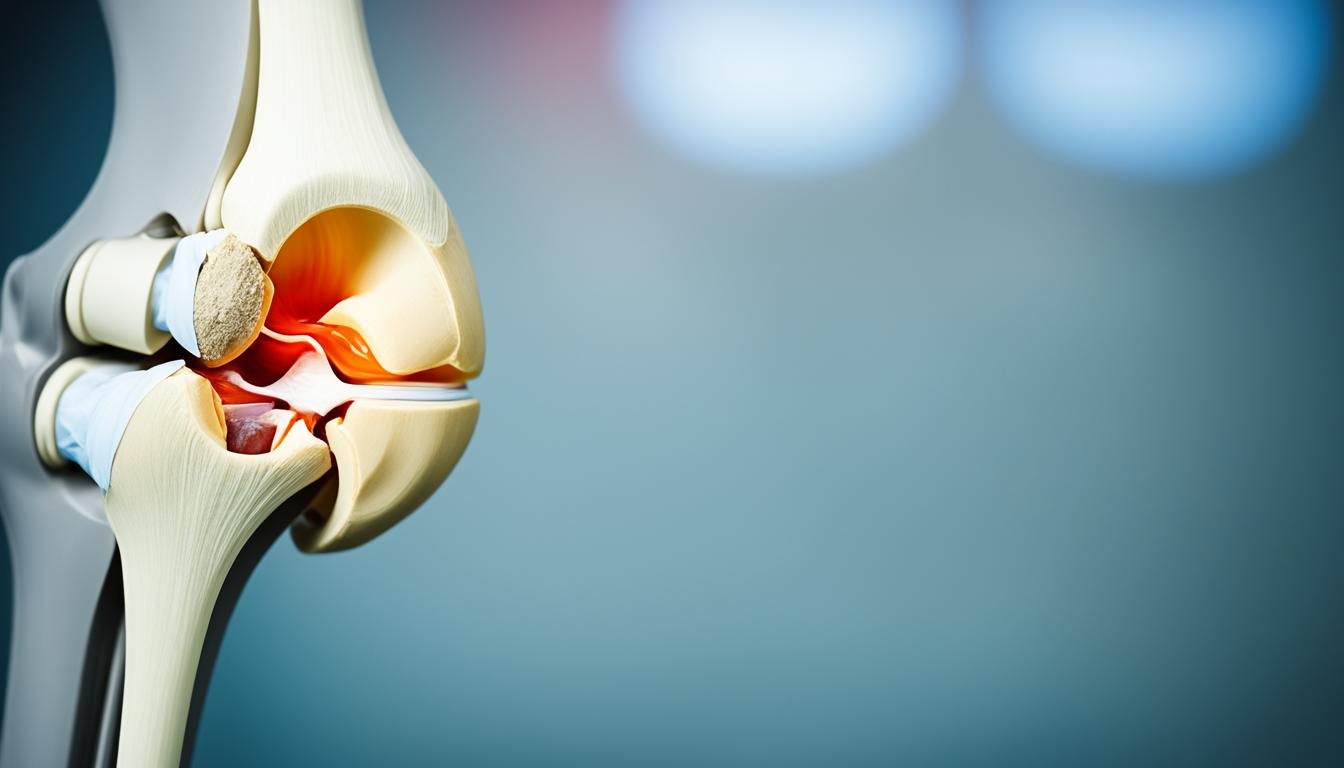Sprains happen when ligaments, connecting bones, are stretched or torn. This can be from lifting heavy things, sports, or twisting the wrong way.
After a sprain, you might feel pain, see swelling, or have trouble using the joint. How bad it is depends on the injury. A doctor will check you and might do X-rays to see what’s wrong.
The first aid for sprains is “RICE”: rest, ice, compression, and elevation. This helps with pain, swelling, and starts the healing. You can also use pain meds, do physical therapy, or sometimes, you might get stem cell therapy.
Don’t ignore a sprain. If you do, you might have trouble later. It’s important to see a doctor and follow the treatment advice you’re given.
Take a look at the image below to further understand the concept of sprains:
Key Takeaways:
- Sprains occur when ligaments are stretched or torn.
- Common causes of sprains include lifting heavy weights, sports injuries, overuse, and improper movements.
- Symptoms of sprains include pain, swelling, bruising, and difficulty using the joint.
- Physical examination and imaging tests like X-rays or MRI are used for diagnosis.
- Treatment options for sprains include rest, ice, compression, elevation, pain medications, physical therapy, and stem cell therapy.
What is the Difference Between a Sprain and a Strain?
Sprains and strains are different. A sprain hurts a ligament. A strain hurts a muscle or tendon. Like, an ankle sprain can come from a fall or sports. A hamstring strain often happens when you sprint. Both hurt because the tissue stretches too much. Sprains get graded by how hurt the ligament is. Strains get graded by how many muscle or tendon fibers are hurt.
When you sprain something, you might hear a pop or feel one. It will hurt, swell, and maybe turn purple. Moving the joint might be hard. If you strain something, it will also hurt, swell, and might turn purple. Movement with a strain can be tough or stop. The signs change with how bad the injury is.
Doctors figure out sprains and strains with a check-up and maybe some tests like X-rays. The fix is often the same. You rest, ice the area, compress it with a bandage, and keep it up. Medicine can help with pain. Doing physical therapy is a common step. Sometimes, bad sprains or strains need surgery.
Prevention Strategies and Recovery Time for Sprains and Strains
Sprains and strains heal at different rates. Mild ones mend in days or a few weeks. Severe cases might need months, especially with surgery. To get better, people should rest, manage pain, do physical therapy, and return to activities slowly.
Stopping these injuries is key. Precautions can lower the chance of getting hurt. It’s vital to warm up well and do exercises to get strong and flexible. Put on the right shoes and use protective gear for risky activities. Good posture, not pushing too hard, and staying hydrated help too.
With these steps, you can avoid sprains and strains. This helps you get back to normal faster. It also keeps you healthy and active without interruptions.

